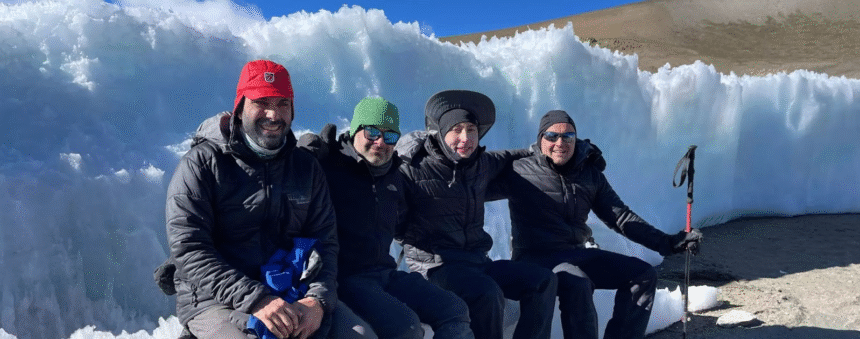Every year, thousands of people hit reset. Some change jobs, start new projects, or chase a creative spark. But few experiences can clear the mind, strengthen the body, and transform your outlook like climbing Mount Kilimanjaro.
Rising 5,895 metres above the Tanzanian plains, Kilimanjaro is Africa’s highest peak — a natural symbol of challenge and renewal. To climb Kilimanjaro is to step away from the digital rush and rediscover what it means to feel alive.
It’s not a climb for professional mountaineers — in fact, it’s famously accessible. No ropes, no ice axes, no technical gear. Just endurance, focus, and the willingness to take one careful step after another.
The Power of Time
The first question every would-be climber asks: how long does it take to climb Kilimanjaro?
Technically, it can be done in five days — but the best results, and the best experiences, come to those who take seven to nine. This longer climb allows the body to adjust to altitude and the mind to slow down.
It’s less about conquering a summit and more about releasing everything that clutters life — deadlines, notifications, worries — and rediscovering rhythm and breath.
A Smarter Route to the Top
Kilimanjaro has many routes, but not all are created equal. Popular paths like Machame and Umbwe often feel crowded and include inefficient detours, like a 401-metre ascent that’s immediately lost into Karanga Valley — the trekking equivalent of spinning your wheels.
Team Kilimanjaro’s TK Lemosho Route is different. It’s designed for success: quiet trails, natural acclimatisation, and balanced pacing. The route flows — like a well-crafted playlist, each section building perfectly toward the crescendo of the summit.
For those who crave something rare, there’s even an Excel Extension — an overnight stay in the crater at 5,729 metres, after summiting. Think of it as a limited-edition release: exclusive, unforgettable, and almost otherworldly.

Timing the Drop
Every great release depends on timing. The best time to climb Kilimanjaro is during the dry months — January to March and June to October. These seasons bring stable weather, clear skies, and the kind of crisp visibility that photographers dream of.
Some, however, prefer the “underground” months — April to May and November — when the crowds vanish and the trails are wrapped in mist. The conditions are tougher, but the solitude deeper. It’s a riskier climb, but for some, that’s part of the appeal.
Comfort and Control
Even at 5,000 metres, experience matters. Team Kilimanjaro offers seven “support series,” each catering to a different kind of adventurer. Around 70 percent choose the Advantage Series — complete with fresh meals, private toilets, and spacious mess tents. It’s the perfect balance between rugged and refined.
The Superlite Series is the minimalist’s release — pack light, move fast, feel everything. The Hemingway Series, by contrast, is luxury in motion — white-glove logistics for VIPs who want to climb in comfort.
No matter the style, every climb runs on discipline, precision, and trust — the same principles that make a world-class performance or production work seamlessly.
The Summit Moment
The final act begins at midnight. Climbers wake to darkness, pull on their layers, and follow a chain of headlamps cutting across the mountainside. It’s cold, silent, and intense — the kind of focus athletes and artists describe before a major release.

And then, after hours of slow, deliberate steps, dawn breaks. The sky floods with gold, glaciers glow like glass, and the wooden sign at Uhuru Peak signals success: the roof of Africa.
It’s more than a view — it’s release in the truest sense. The weight drops away. The noise fades. What’s left is freedom, perspective, and light.
After the Ascent
Many climbers follow their summit with a safari in the Serengeti or downtime on Zanzibar’s beaches — closing their adventure on a note of peace. But the real transformation begins when they return home. The mountain becomes part of them: a reminder that clarity, strength, and joy are built one step at a time.
Final Reflection
To Kilimanjaro veterans, this mountain is not just a destination — it’s a release. A full-system reboot that clears away the unnecessary and reawakens what’s pure and strong within.
By taking time — knowing how long does it take to climb Kilimanjaro, choosing the best time to climb Kilimanjaro, and following purposeful routes like TK Lemosho — climbers find themselves freer, lighter, and more alive than they ever expected.
Kilimanjaro isn’t just another item on your travel list. It’s a reset button for the soul — a release that lasts long after you’ve come back down.


